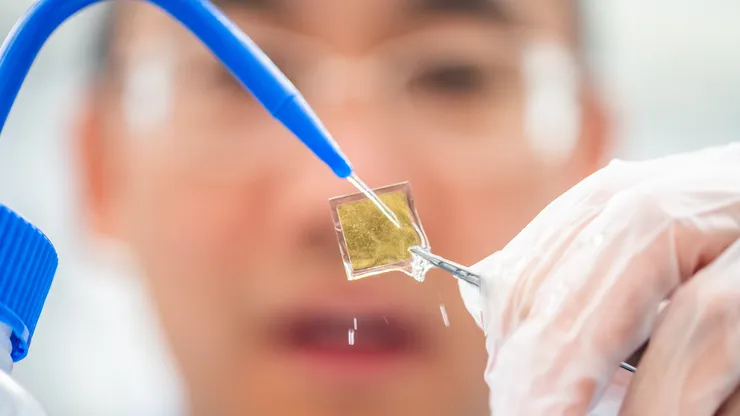Revolutionizing Hydrogen Production: Enhanced Efficiency Through Three-Layered Material
Key Ideas
- Researchers at Linköping University have developed a three-layered material that significantly increases the efficiency of hydrogen production from water by capturing and converting solar energy effectively.
- This breakthrough is crucial for larger modes of transport like heavy trucks, ships, and aircraft where batteries are not feasible, highlighting hydrogen as a promising clean energy alternative.
- The multi-layered material, with cobalt oxide, cubic silicon carbide, and a water-splitting catalyst, has shown eight times better performance in splitting water into hydrogen compared to pure cubic silicon carbide.
- The long-term goal is to achieve 10% efficiency in producing 'green' hydrogen solely powered by solar energy, reducing the environmental impact associated with current 'grey' hydrogen production methods.
A recent study published in the Journal of the American Chemical Society by researchers at Linköping University unveils a significant advancement in hydrogen production efficiency. The research team developed a three-layered material that enhances the process by capturing solar energy more effectively than existing technologies. By utilizing this material, the photochemical water-splitting reaction can efficiently produce hydrogen from water.
The study emphasizes the growing importance of clean energy solutions for transportation, especially for vehicles like heavy trucks, ships, and aircraft that cannot rely on traditional batteries. The material's structure, consisting of cobalt oxide, cubic silicon carbide, and a water-splitting catalyst, has demonstrated a remarkable eight times improvement in water-splitting performance compared to pure cubic silicon carbide.
Efforts to produce 'green' hydrogen aim to reduce the environmental impact associated with current 'grey' hydrogen production, which emits significant amounts of carbon dioxide. The team's ultimate objective is to achieve 10% efficiency in creating 'green' hydrogen solely powered by solar energy. This transition would make hydrogen production more cost-effective and environmentally friendly.
The study highlights the necessity for efficient materials in the hydrogen production process to meet the increasing demand for renewable energy sources. While the current efficiency of materials under development ranges from one to three percent, the researchers are striving to reach the desired 10% efficiency threshold in the coming years. The research not only contributes to the advancement of clean energy technologies but also aims to address environmental concerns related to hydrogen production.
Topics
Production
Clean Energy
Transportation
Research
Efficiency
Renewable Resources
Material Science
Solar Energy
Carbon Footprint
Latest News
